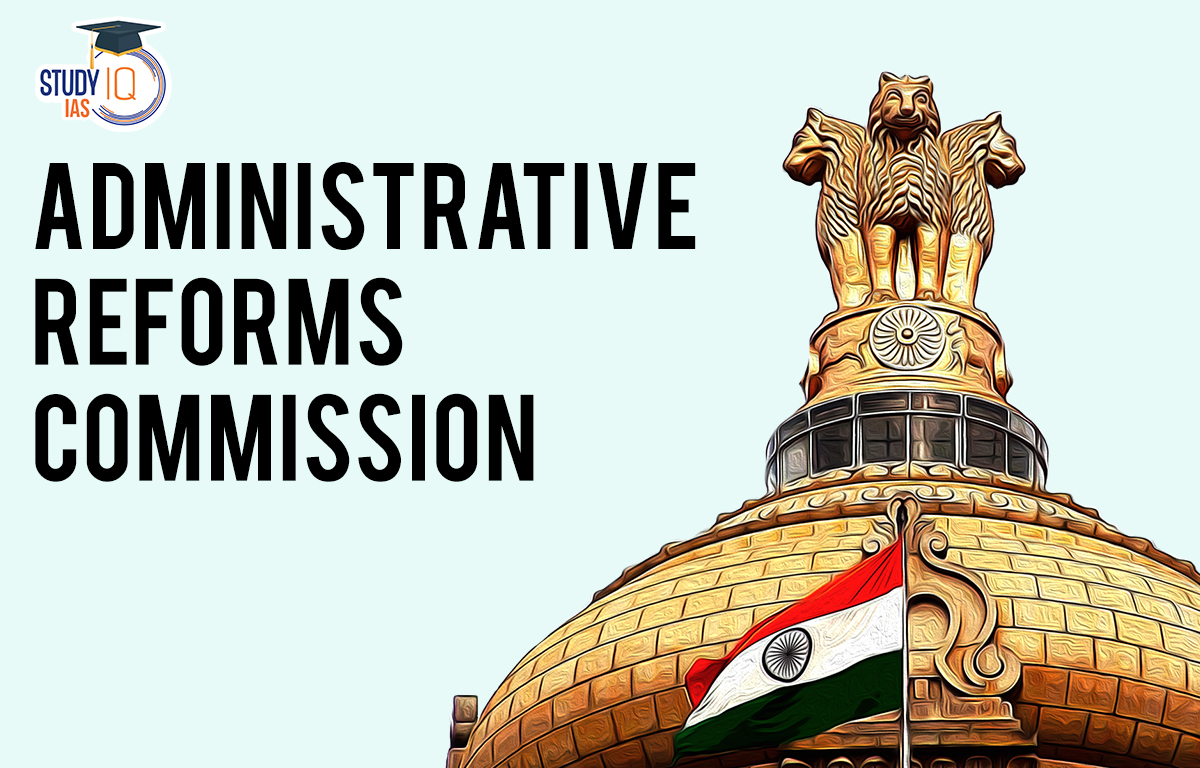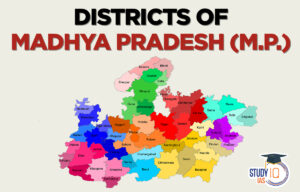Table of Contents
Administrative Reforms Commission
The Administrative Reforms Commission (ARC) was created by the Indian Government and first led by Shri Morarji R. Desai. Established on January 5, 1966, it aimed to improve the administrative system in India during Nehru’s time. The commission provided management advice and helped implement policy reforms. Its main task was to review Indian public administration and suggest necessary changes. Other members included K. Hanumanthaiya, H.C. Mathur, G.S. Pathak, H.V. Kamath, and V. Shanker, who served as the member secretary.
The Administrative Reforms Commissions is an important part of Indian Polity which an important subject in UPSC Syllabus. Students can also go for UPSC Mock Test to get more accuracy in their preparations.
Administrative Reforms Commission History
The administration is a body that controls how well residents’ needs are met in the provision of services. To achieving the socioeconomic development of the nation, the administrative structure is crucial. The administration system is a dynamic process that necessitates ongoing modifications to address deficiencies in current systems and keep up with new advancements. The goal of administrative reform is to establish and implement the modifications that are required for a government’s administrative units to successfully carry out public policy.
The transition from colonial rule and British law to democracy and the Republic of India represents the country’s first administrative reform. Since independence, numerous commissions have been established to recommend changes to the administrative system.
Administrative Reforms Commission Major Committees
| Many commissions and committees were established such as: |
|
Administrative Reform Commission Importance
The major goal of Administrative Reforms Commission in India is to increase administrative capability in the new environment, which is a clear response to the new issues facing the state association handling public affairs. The focus needs to be on mechanisms for external responsibility such social audits, resident alliances, and educating public workers on the result method because they answer to political leaders.
First Administrative Reform Commission
To implement fundamental reforms in India’s governmental administration, the first ARC (1966) was established. This Commission produced 20 reports on administrative reforms in India and made 537 suggestions. The primary topics that were addressed in the first ARC’s report were:
- Financial, personnel, district, agricultural, and economic administration;
- Centre-State Relations;
- Government Machinery Procedures
- Every administrative level has a planning system.
- Service and Central Government job recruitment and training.
- Issues with the redress of citizen complaints
- The requirement for government administration specialization.
Before disbanding in the middle of the 1970s, the Commission delivered 20 reports. The initial ARC for Administrative Reforms in India’s recommendations are:
- Suggestions on center-state relations
- Transferring the Ministry of Law’s high court judge appointment process
- The interstate council will determine the parameters for the governor’s latitude.
- Encourage the creation of a Central Direct Taxes Administration to handle issues connected to the imposition and collection of direct taxes.
- Planning equipment (Final).
- Posts and telegraphs;
- The small-scale sector.
- Reserve Bank of India;
- Life Insurance Administration.
- Public Sector Organisations;
- Finance, Accounts, and Audit;
- Scientific Divisions
Second Administrative Reforms in India
The second ARC, which was held in 2005, sought to better public administration. The Personnel and Administrative Reforms Department of the Government of India was promoted as a result of the submission of 15 reports and 1500 recommendations. The mandate topics addressed and prioritised in this ARC’s report were:
- Strengthening the infrastructure for financial management;
- Effective administration at the State and District levels.
- Disaster management, e-government promotion, ensuring ethical behaviour in public service, and Indian government regulatory framework planning.
These were the second Administrative Reforms Commission’s most important proposals:
- Introduce crisis management;
- emphasize how the right to information is a crucial component of good governance;
- emphasize human capital management
- Promotion of citizen-centric administration;
- Improvements to the administration of personnel;
- Recommendations for maintaining public order.
- Reducing Terrorism
- Strengthening Financial Management Systems.
- Promoting e-Governance.
Second Administrative Reforms Commission Implementation
In order to investigate and assess the Second Administrative Reforms’ suggestions for further implementation, the Government assembled the Group of Ministers (GoM) in 2007. The fifteen reports listed above were part of this Group of Ministers:
| S.No. | Report Name | Recommendations Approved |
| 1. | First report | Right to Information: Key to Good Governance |
| 2. | Second Report | Unclosing human funds: Entitlements and Government – a Case Study relating to NREGA |
| 3. | Third report | Crisis Management From Despair to Hope |
| 4. | Fourth Report | Ethics in Governance |
| 5. | Fifth Report | Public order |
| 6. | Sixth Report | Local Governance |
| 7. | Seventh Report | Capacity Building for Conflict Resolution |
| 8. | Eight Report | Combating Terrorism Protecting by Righteousness |
| 9. | Ninth Report | Social Capital-A Shared Destiny |
| 10. | Tenth Report | Refurbishing of Personnel Administration- Scaling New Heights |
| 11. | Eleventh Report | Promoting e-governance: The intelligent way Forward |
| 12. | Twelfth Report | Citizen-Centric Administration – The Heart of Governance |
| 13. | Thirteenth Report | Organisational Structure of the Government of India |
| 14. | Fourteenth Report | Strengthening Financial Management System |
| 15. | Fifteenth Report | State and District Administration |
Impact
The Administrative Reform Commission aimed to strengthen government effectiveness through its recommendations. Both commissions suggested reforms that included changing laws or improving government procedures. Many of these recommendations have been positively implemented, leading to noticeable improvements in how the government operates. Although not all recommendations have been put into action, the changes already made have had a significant impact.
Conclusion
The Administrative Reform Commission works to enhance government effectiveness. Two commissions have provided numerous recommendations, most of which the government has considered and accepted. Reform is an ongoing process necessary for the country’s development. While progress has been made, issues like corruption still pose challenges. Many accepted recommendations remain unimplemented and should be acted upon to ensure effective administration.
Administrative Reforms Commission UPSC
The Administrative Reform Commission is an organization entrusted with advising the government on how to increase its effectiveness. Two commissions that have already been constituted have produced a number of recommendations, the bulk of which the administration has nearly completely considered and accepted. For the nation to advance, reform is a dynamic idea that must be maintained. Despite the fact that significant reforms have already been made, the administrative system still has many problems.Students can read all the details related to UPSC by visiting the official website of StudyIQ UPSC Online Coaching.


 Consolidated Fund of India, Meaning and ...
Consolidated Fund of India, Meaning and ...
 Districts of MP List, Name, Importance, ...
Districts of MP List, Name, Importance, ...
 Admiralty (Jurisdiction and Settlement o...
Admiralty (Jurisdiction and Settlement o...





















